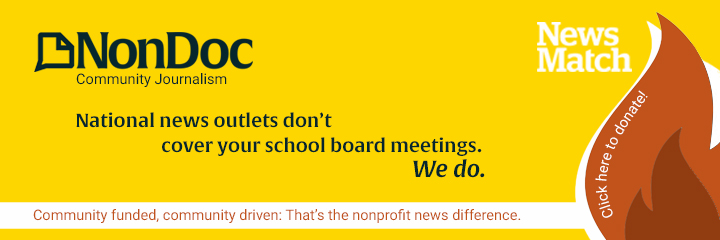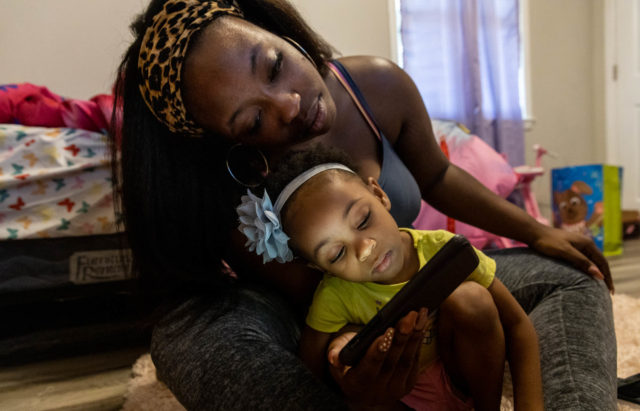

By Kylie Graham, Wendy Weitzel and Sara Metz | News21
PHOENIX — Barbara Nelson likes to watch the neighborhood from her south-facing window, where grayish stucco and sturdy tile roofs give the buildings a clean facade.
But after living here for a year, the view behind the walls is much less tidy. She is one of a number of residents at the complex who have risked losing their homes during the pandemic.
“The gentleman across the way, he works and he takes care of his daughter. He’s a single dad,” Nelson said, looking out at the block. “And my neighbors that have the twins and their other daughter, that’s the same thing … They pay as much as they can, but they’re facing eviction, too.”
Nelson lost her job when her 11-year-old son contracted COVID-19 in March, and while she got her real estate license to make ends meet, she was unable to show clients any new homes after her truck broke down on June 11.
At one point Nelson owed more than $5,000 in back rent, and she said was almost out of options to pay it.
Across the country, as many as 1 in 5 renters say they have fallen behind on rent during the pandemic. For families who have no financial safety net to fall back on, the economic consequences of the coronavirus have pushed them to the precipice of homelessness.
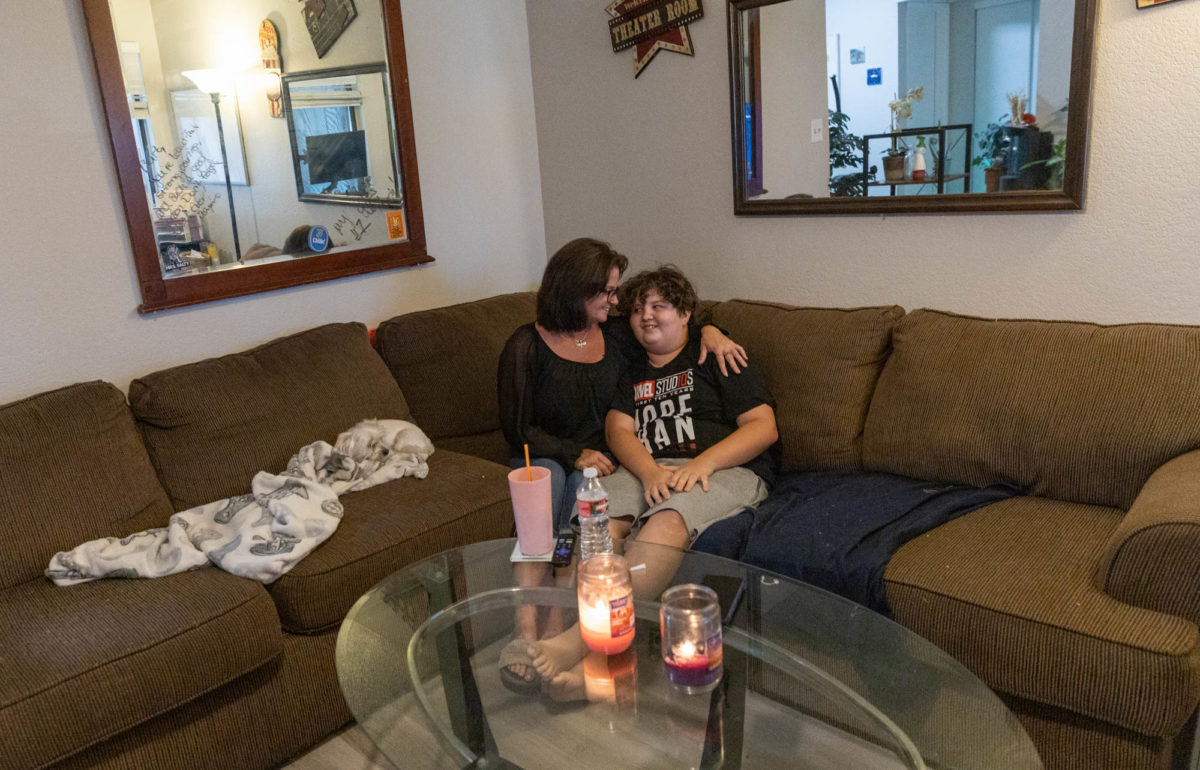
The Biden administration expected the $46.5 billion Emergency Rental Assistance Program, launched by Congress in December and March, to stave off the impending eviction crisis. But only about $3 billion had been distributed to Americans by states and localities through June.
The administration hopes to introduce the new federal moratorium on evictions, expiring in early October, which will buy states and localities time to get the funding into the right hands.
Nelson has been approved for rental assistance through Wildfire, an organization partnering with Phoenix to distribute Emergency Rental Assistance funds, but the organization was slow to get the check to her landlord.
“It’s easy for you to say, ‘Try calling that number, try waiting on hold for an hour, calling back in another hour, calling back the next week, calling unemployment twice a week,’” Nelson said. “It’s all just been a struggle.”
According to the Center on Budget and Policy Priorities, even before the pandemic, 3 in 4 families were unable to get a Section 8 housing voucher because of rampant underfunding.
“The pandemic put a spotlight on our nation’s housing challenges in a way that no other crisis in recent memory has,” said Ann Oliva, a senior fellow at the policy center. “And while newly funded eviction prevention programs are now getting fully underway, it is taking some time to get those funds into the hands of households and landlords who need it.”
A worsening housing crisis
When Jeff Yungman went to law school in 2004, he had big plans for his future legal clinic.
“There wasn’t a person there at school I didn’t tell, of the faculty or staff, ‘I’m here at school because I’m going to start a legal clinic at One80 Place,’” he said. “So everybody knew why I was there and what I wanted to do.”
One80 Place is the only full-service homeless shelter in Charleston, South Carolina, and it has served the community since it opened in 1984 under the name Crisis Ministries.
Now, Yungman’s colorful office sits in a converted 1950s home adjacent to the shelter, where he has worked for more than two decades.

Despite the increase in demand for help, shelters nationwide operated at limited capacity to follow the safety guidelines set by the Centers for Disease Control and Prevention.
Capacity at One80 Place has been capped at 50 percent since the beginning of the pandemic. But Yungman says that while he’s seeing fewer people staying at the shelter, more people are coming in for legal concerns than ever before.
According to Oliva, for the first time since the CBPP started gathering data on the number of homeless Americans, more people are living on the streets than in the nation’s homeless shelters.
“We have a renewed sort of outreach to try to reach people that need legal services that aren’t staying in One80 Place because of the fact we can’t keep as many people,” Yungman said.
Yungman helps homeless Charlestonians with a variety of legal issues, such as securing federal identification, attaining disability and unemployment benefits, and overseeing legal cases dealing with housing concerns.
One of his clients has been paying $650 a month for her trailer, which was condemned by the Charleston County Building Inspection Services months ago.
The U.S. Department of Housing and Urban Development defines any household that spends more than 30 percent of its annual income on housing and utilities as cost-burdened. SC Housing, the state agency for affordable housing opportunities, found nearly a quarter of South Carolina’s renters spent at least half of their income on housing and utilities as of March 2021.
“Pre-COVID, people would come in … 70 percent of their income was going to rent,” Yungman said. “We all would try to tell them, you know, we can get you maybe a plan to move out at a certain time and not have an eviction on your record, but … you can’t afford to stay where you’re staying.”
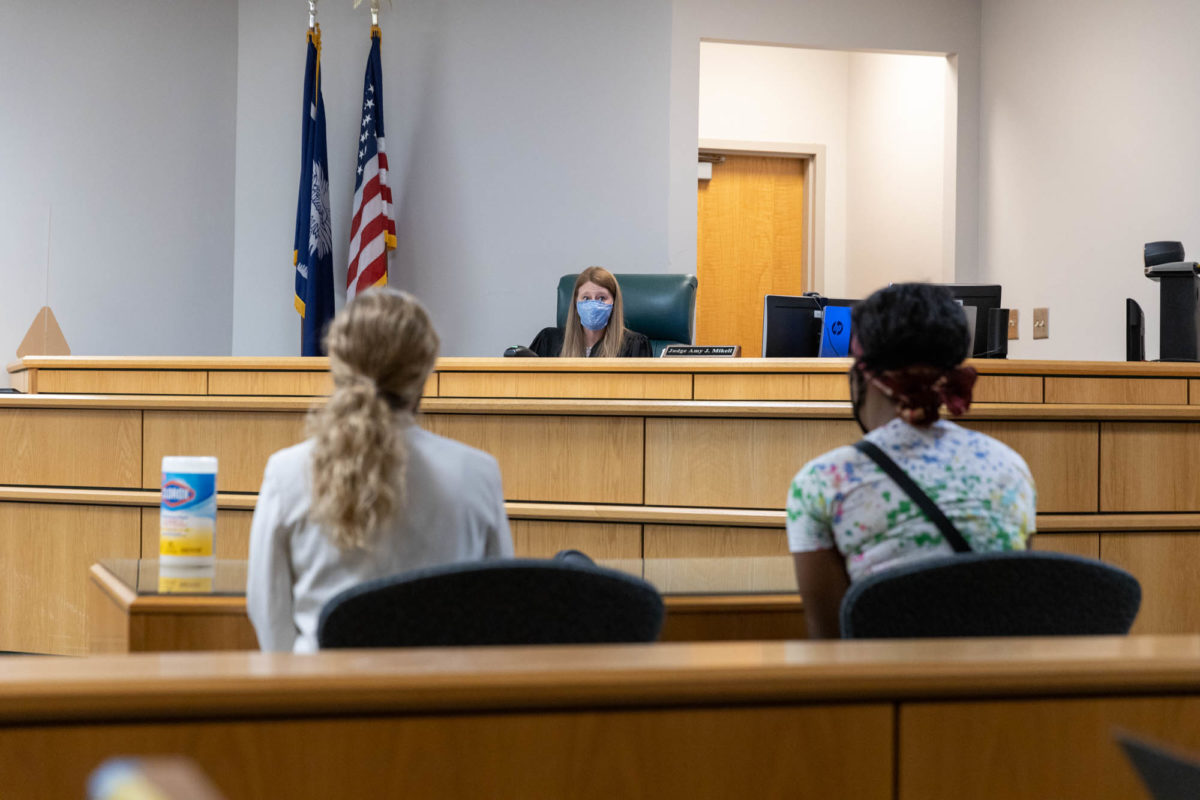
Zillow found that the average rent across the nation rose by 2.3 percent from April to May of 2021, to $1,747 a month.
According to Oliva, experts knew a housing crisis was coming as early as January 2020, months before COVID-19 took hold. She said the pandemic accelerated the oncoming housing crisis by requiring Americans to stay home and reducing opportunities for work.
Ian Watterson, a housing lawyer and landlord for several small rental units in Charleston, said that for many mom-and-pop landlords, the pandemic-related economic downturn has made it much more difficult for them to maintain their rental properties.
“If they all get foreclosed on, it’s just going to reduce the rental stock and drive rents up further,” he said. “A lot of people are not renting anymore. They’ll sell the house or whatever. So when this is all over, you’re going to see a lot less rental units and higher rents.”
Emily Blair, the executive vice president of Austin Apartment Association, an organization helping landlords in Texas, said that the increase in operational expenses due to COVID-19 and the lack of revenue due to the eviction moratorium has put landlords in a sticky spot.
“That takes away rental housing units from the community, which is not a good thing,” Blair said. “We want rental housing to be fully available for those who need it and who need that flexibility, who need that coming into a new market, who need that for affordability purposes.”
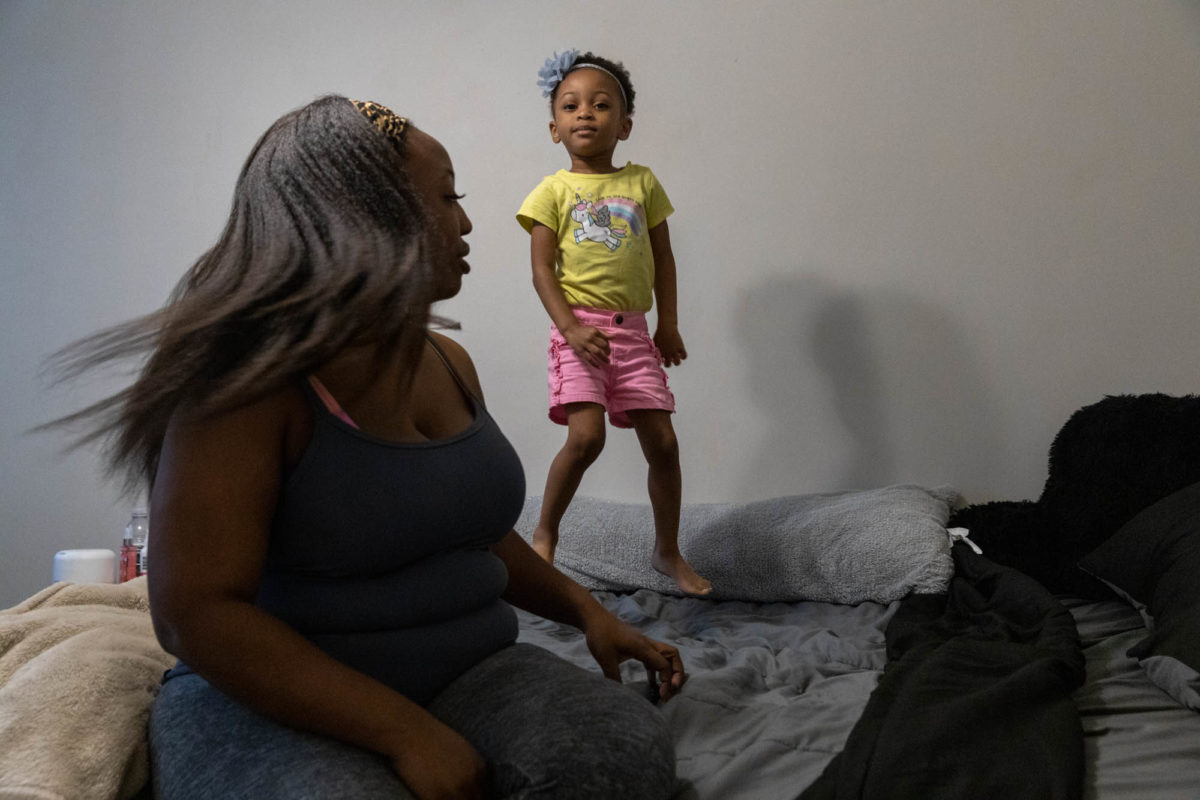
The lack of safety nets
Essence Harrison’s apartment on Gale Street is barren except for the child’s bedroom that sits down the hall behind the first door on the right.
“I’m not good at decorations. It’s not my forte,” Harrison said, who has lived in the two-bedroom rental with her daughter, Amiya Belton, since March. “Her room was the first room that I put up, I guess, as soon as I got this place. I was so excited for just her to have her room finally. I put her bedsheets, her trolls, her table, her toys.”
It took Harrison more than five months to find a home where she could afford to raise her 3-year-old. The two-bedroom rents for $900 a month — the cheapest she could find.
When Harrison fell behind on the rent for the North Charleston apartment where she had lived in June 2020, the federal moratoriums did not save her from eviction. She spent four months living in hotels and taking Uber cars to work before an employee at One80 Place stepped in to help.
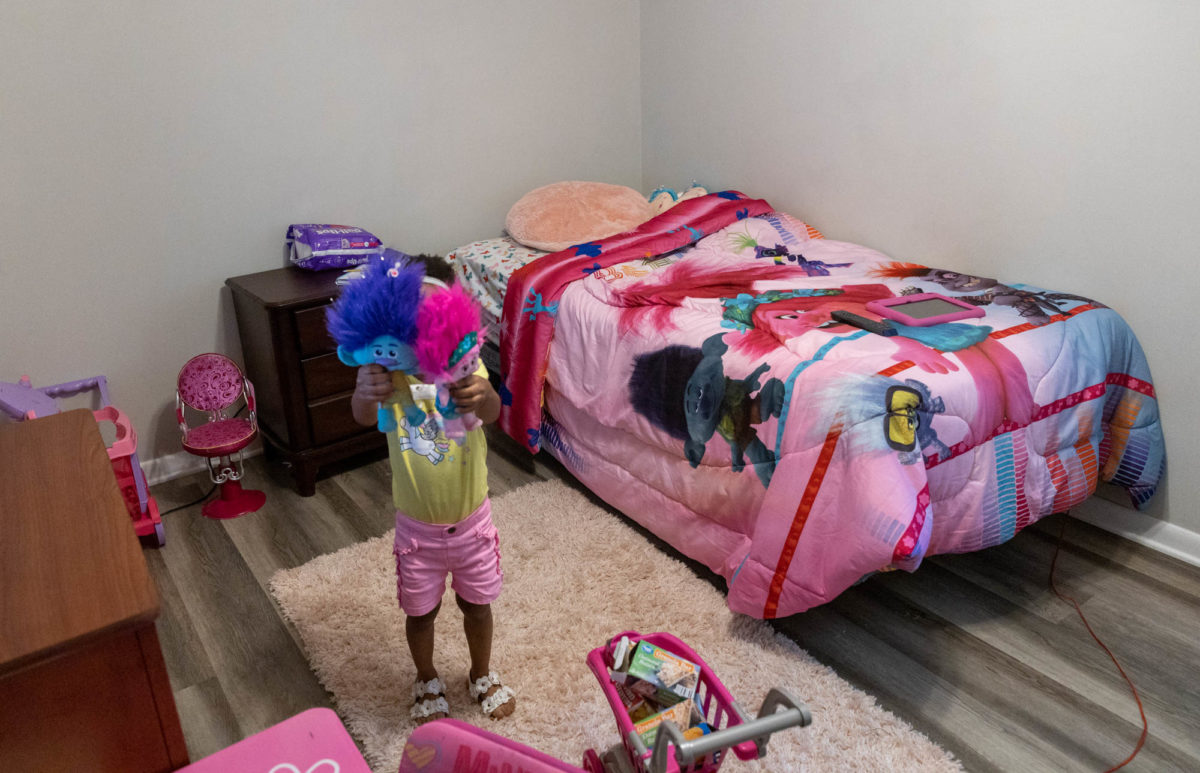
Even prior to the pandemic, North Charleston had the highest eviction rate in the country, with 16 percent of tenancies ending in the renter’s removal.
In 2020 the neighborhood had a poverty rate of about 21 percent, nearly 12 percent higher than the national average. This rate is even higher among North Charleston’s Black residents.
According to the World Population Review, the poverty rate among Black residents in North Charleston is about 27 percent. It is more than 10 percent among the city’s white residents.
“During the course of the pandemic, we’ve seen the housing crisis really deepen in communities that have been historically marginalized,” said Alieza Durana, narrative change liaison at the Eviction Lab.
According to a study focused on discrimination in evictions, people of color make up 80 percent of those facing evictions.
“Even controlling for all other factors — income, the home value and various other things you might sort of anticipate would be important factors — race was twice as impactful as any other factor,” said Kathryn Howell, co-director of RVA Eviction Lab.
Harrison was scheduled to start a new job managing a Pilot Jet gas station two days after getting a positive test result for COVID-19 in July 2020. The company did not take her on.
Without savings or generational wealth to fall back on, she said healing financially from her losses took much longer than recovering her personal health.
“You don’t have anything to fall back on when you use all your savings trying to stay afloat while you’re sick,” she said. “And then you’re not sick anymore. That catch-up is impossible. There’s nothing you can do.”
Harrison did not know where to start when it came to filling out paperwork and making phone calls. She tried to apply for unemployment, food stamps and COVID-19 relief but was told she was ineligible because she had made too much money the previous year.
There were several notices before Harrison’s landlord posted the final eviction date on her door. By then, she was $3,967 behind on rent.
“Just getting that last paper of them telling you what day you have to leave, I think that’s the hardest part of the eviction process,” she said. “And what it feels like is just, it’s like drowning, like drowning in paperwork.”
She said she didn’t try to fight the removal because she didn’t feel like she had any legal grounds.
“It’s intimidating to have a company of any kind to send … you a court paper,” Harrison said. “I can’t afford to get anybody to defend me. Or who knows? And I probably don’t even have all the paperwork that they need for me to go to court, so I honestly didn’t even think about challenging them. I just left. I just did what I was told.”
It is common for tenants to “self-evict,” or willingly move out instead of appearing in court. In South Carolina, tenants being evicted are not automatically scheduled for a court hearing — instead they must call themselves.
“With landlord-tenant laws, a tenant is at a disadvantage because the landlord is the person bringing the action against the tenant. And more often than not, a tenant does not know their rights. All they know is that their house, where they live, is in jeopardy,” Magistrate Ellen Steinberg said.
A battle to prevent eviction
Brandon Harris wore his best suit to court on a Thursday morning in early July. Its bold plaid pattern, he said, boosted his confidence. He needed this hearing to go well.
Harris had already been planning on moving when he received an eviction notice from his corporate landlord. He was supposed to pick up the keys to his new apartment the day before his court date. Due to the pending eviction, his new landlord refused to hand them over.
“It’s just, just some difficult times. I got behind on rent. I was on disability leave without paying, and I just, I wasn’t able to maintain the bills,” he said.
Harris’ landlord claimed that other people were living in his apartment against the specifications of his lease, but Harris was several months behind on his rent. He had to leave his job at T-Mobile during the pandemic due to his chronic bronchitis, which puts him at increased risk for COVID-19.
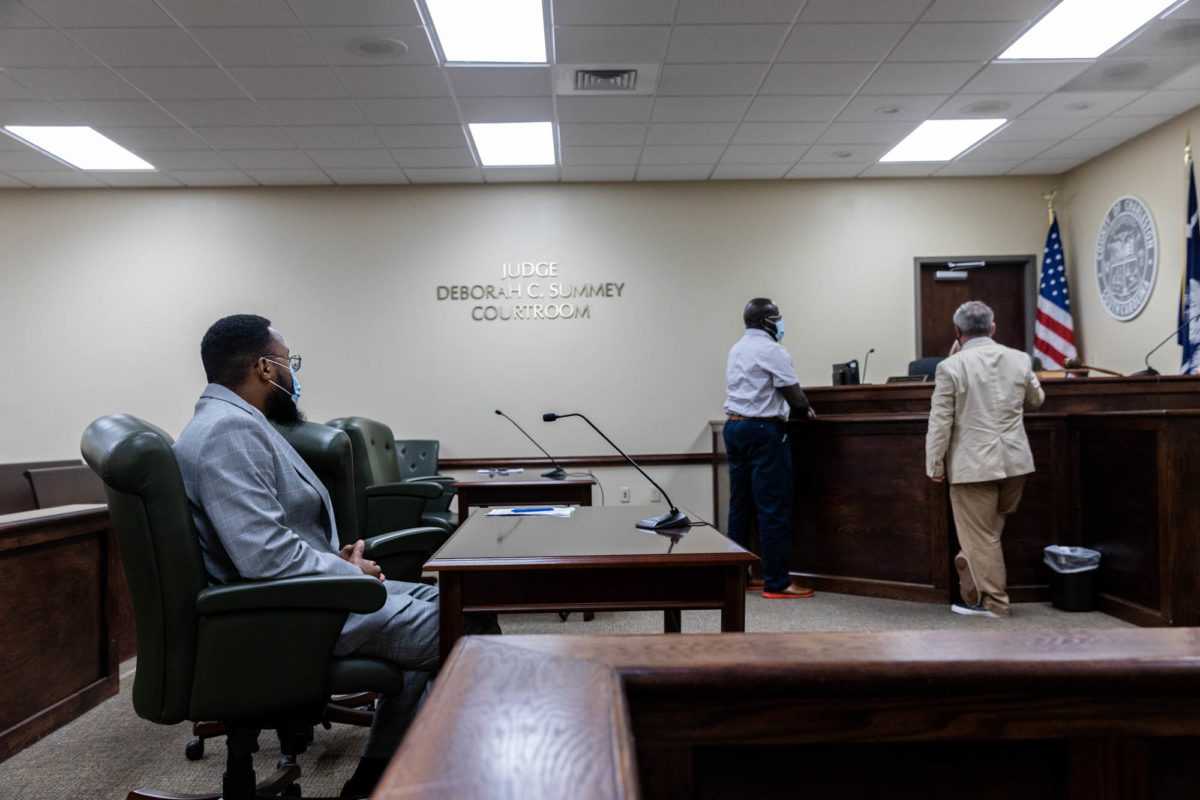
Ian Watterson was the pro bono lawyer appointed by the housing court to represent Harris in court that morning.
Watterson and a representative for the landlord were able to agree on a date for Harris to move out without carrying out the eviction.
“I’m actually going to reach back out to that (new) landlord to have him call up here and let them know that everything’s settled. We reached an agreement. So it’s a very promising place. I’m excited. I think I’ll be able to move in there,” Harris said.
Watterson said Harris’ case is similar to many he sees. Usually, he added, landlords and tenants are able to reach an agreement without carrying out the formal eviction.
“There’s no great magic to this. It’s just negotiating and helping people through things,” Watterson said. “We have a pretty darn good success rate. We have learned a lot and are better at either mediating them or, if there’s a hearing, winning them.”
Housing Court is a collaboration of legal aid organizations in Charleston that provides legal representation to tenants facing eviction. The idea came from Jeff Yungman in the fall of 2018. As legal director of One80 Place Legal Services, Yungman had seen firsthand the effects of eviction and the lack of legal representation for tenants losing their homes.
The first Housing Court session took place in October 2019 at North Area 1 Magistrate Court. Since then, Housing Court has expanded into four magistrate courts, including Steinberg’s, with plans to add two more.
Landlords often do not want to evict their tenants, Steinberg explained. The process is tedious — court hearings, painting, repairs — and Steinberg says it’s often easier for everyone to keep tenants in their homes.
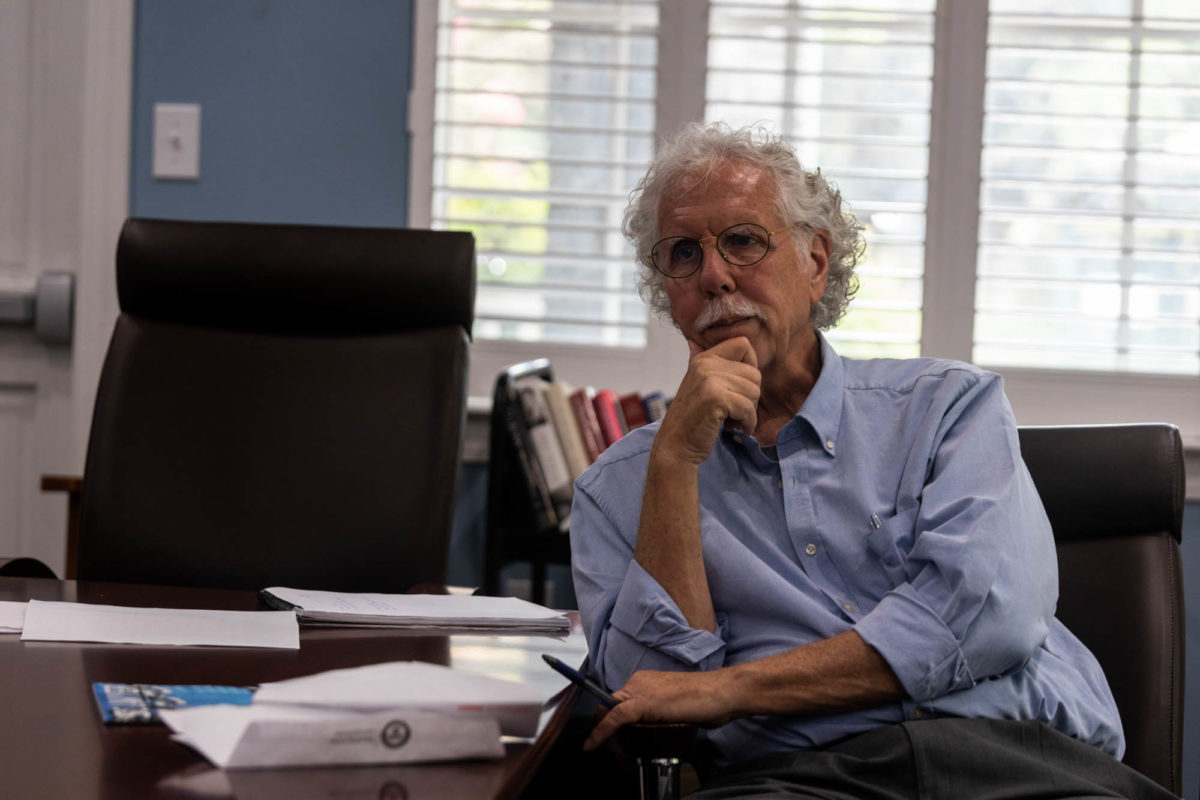
At first, landlords were hesitant to embrace the idea of Housing Court, feeling it offered an unfair advantage to tenants, the judge said. But over time they’ve come to recognize its ability to foster conversation.
“Landlords recognize that it works … when parties speak to each other,” Steinberg explained.
But Yungman says that legal representation is not enough to alleviate the consequences of evictions. He wants to emphasize that the root causes of homelessness need to be addressed to mitigate the worst outcomes of the pandemic.
“Coming to terms with that,” he said, “The government has to provide some help for people in order to be able to afford the housing that’s available.”
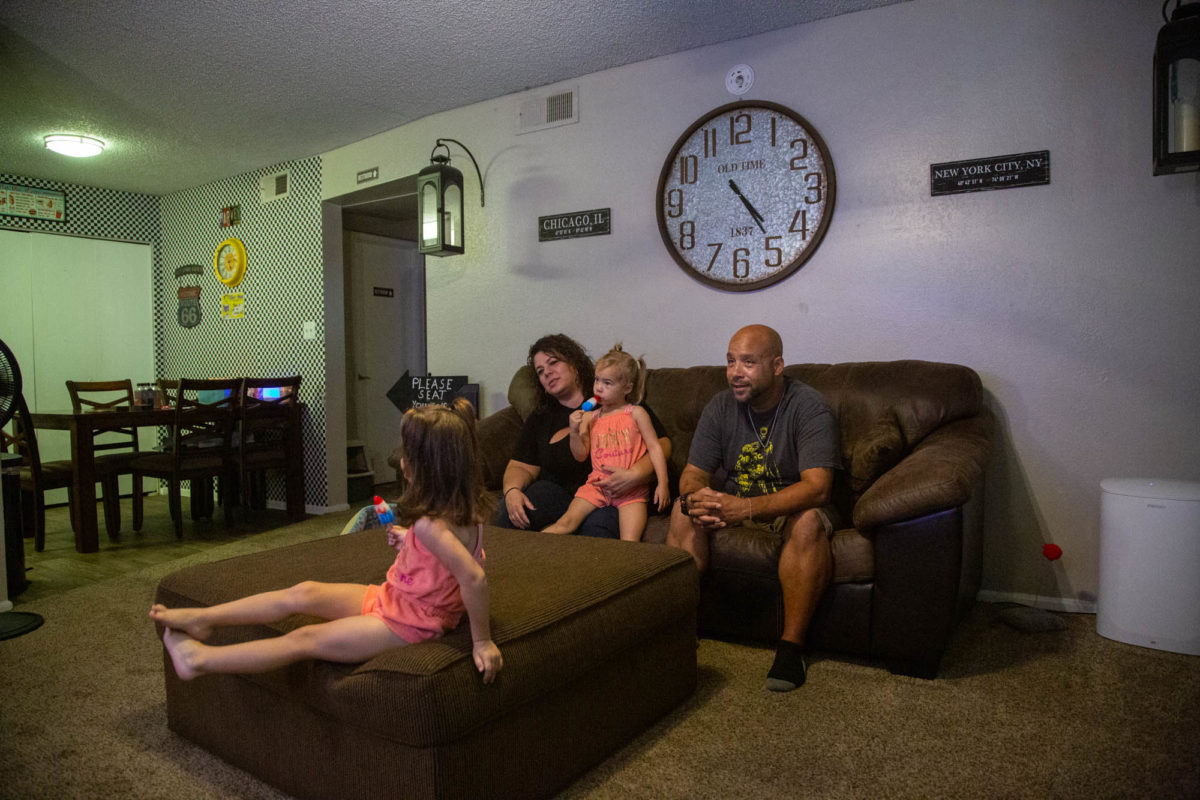
Unknown territory
There’s been a change in the air at Ryan Harvey’s Pheonix apartment complex, he said, who lives across the hall and up a floor from Barbara Nelson.
Moving trucks in the parking lot and orange stickers from the constable’s office on neighbors’ doors have become frequent over the past two months. People, he said, were preparing for the ax to come down.
“Everybody knew the moratorium was getting ready to expire,” Harvey explained. “Everybody’s aware that … the safety net’s being pulled.”
The new moratorium, which expires Oct. 3, replaced a broader one that had been in place since Sept. 4, 2020, and expired July 31. It will prevent evictions due to COVID-related nonpayment of rent in counties with high transmission of the delta variant. The new moratorium will cover about 90 percent of the U.S. population.
With an additional two months, states have more time to distribute the $46.5 billion allocated by Congress for the ERA program, which has been tied up in court.
Harvey and his family were able to secure rental assistance from Wildfire, but the check has not been sent to his landlord yet.
Phoenix was allocated $51.1 million to begin the ERA program on March 8. But as of Aug. 3, a little under half that amount had made it into the hands of Phoenix residents.
“The slow processing of rental assistance applications can be attributed to several factors,” said a July 27 report from the Aspen Institute, “including high documentation burdens, long payment timelines, and insufficient infrastructure for rental assistance support.”
In the same report, the institute estimated that 15 million renters owed more than $20 billion to their landlords in the U.S., but some experts, like Yungman, found reasons to be hopeful.
“My assumption is that if a tenant has applied for ERA funds and is still in the process of trying to get those funds given, everybody knows, of course, that that process is taking much longer than it should,” Yungman said. “I don’t think any of the four judges are going to evict somebody when there’s financial assistance pending.”
But despite receiving rental assistance, Harvey said, he is unsure what the coming weeks hold.
“Take one step forward, you’re taking 10 backward, so it is unknown territory,” he said, “I can’t tell you what the next month is going to look like. All I can say is we have to do the best we can day by day. We take it one day at a time.”
(Editor’s note: This report is part of Unmasking America, an investigation of the lingering toll of COVID-19 produced by the Carnegie-Knight News21 program. For more stories, visit unmaskingamerica.news21.com.)

